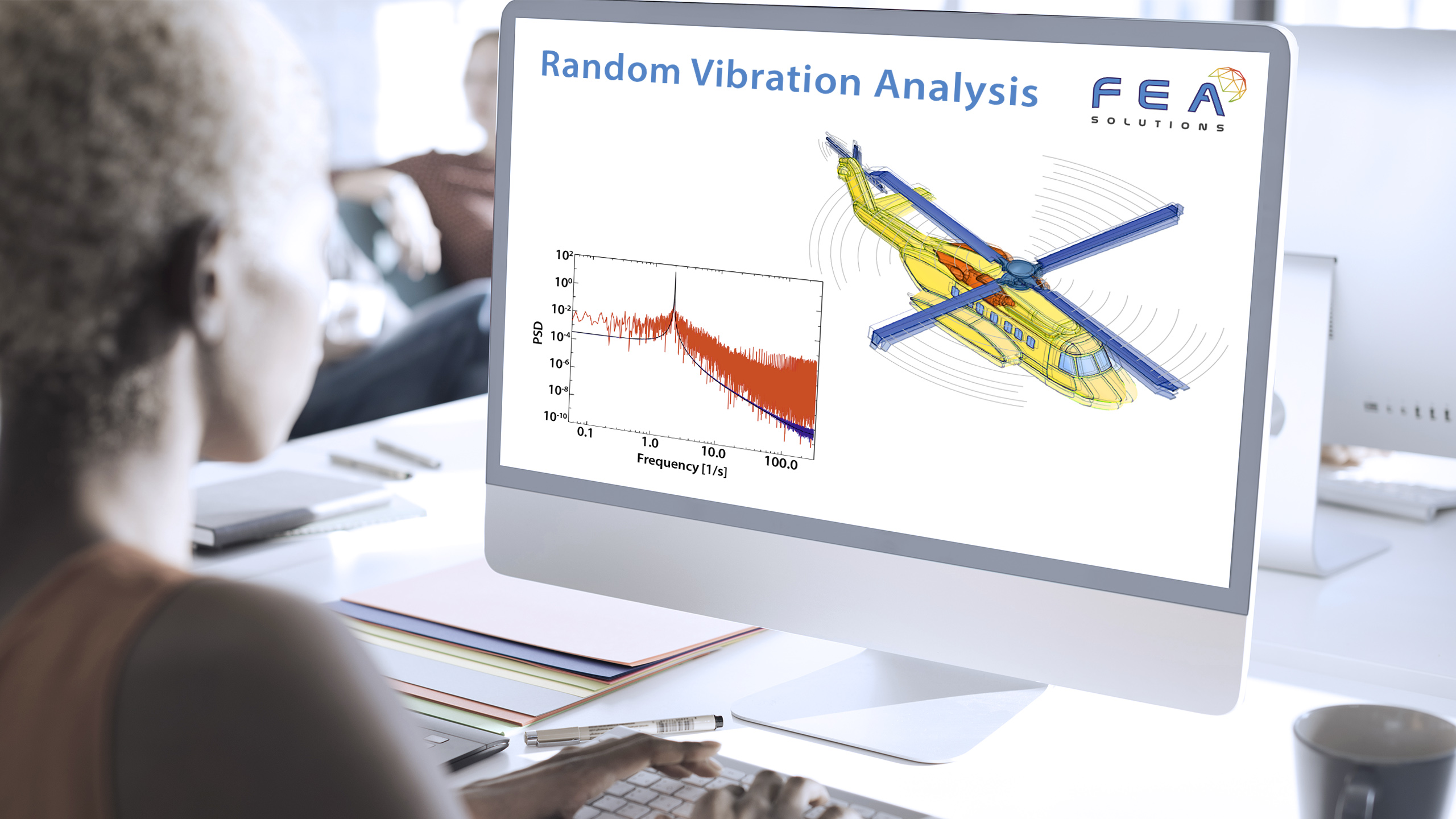
03 Jul Random Vibration Analysis
A Random Vibration Analysis (RVA) is used to calculate the system’s structural response to a spectrum of random excitations, and non-deterministic loads. Examples of non-deterministic loads include loads generated on a wheel travelling over a rough road, or random structural vibrations on the airframe of a helicopter. RVA is conducted in the frequency domain and is usually performed over a large range of frequencies, e.g. from 20 to 20,000Hz.
Like some other dynamic analyses, such as DDAM analysis (https://www.fea-solutions.co.uk/ddam/), the loads are applied in the X, Y and Z directions separately and then the results are combined using a combination method such as SRSS. For more on results combination methods, please read (https://fea-solutions.co.uk/result-combination-methods/).
Before RVA is conducted, a modal analysis must be completed on the system in question to provide the dynamic characteristics of the system. The natural frequencies and mode shapes are combined appropriately to give the structural response of the system.
In a Random Vibration study, the loads are described by Power Spectral Density (PSD) functions. The PSD functions are a measure of a vibration’s intensity in the frequency domain. These functions determine the average of the acceleration amplitudes within a certain frequency range, as although acceleration amplitudes at a frequency constantly change, the average value tends to remain relatively constant.
For analysis post-processing, PSD results of stress, strains and displacements of the system are produced. These can be shown at a specific frequency or as graph results at specific locations versus frequency values. In the latter case, the integration of the Response PSD curve will yield the variance of the result.
In RVA, the results are often reported as Root-Mean-Square (RMS) results, a way of averaging results to represent all values that are likely to occur inside the ‘3 sigma’ rule. This means that the results generated will include those within 3 standard deviations from the mean result, or at least 99.73% of the system’s responses to the random vibrations.
As a modal analysis (https://fea-solutions.co.uk/modal-analysis/) must be performed beforehand, non-linear behaviour cannot be represented in Random Vibration Analysis. For more information on non-linear behaviour please read (https://fea-solutions.co.uk/non-linear-behaviour/).
Please call us today on +44 (0)1202 798991 for any engineering analysis requirements you might have.
